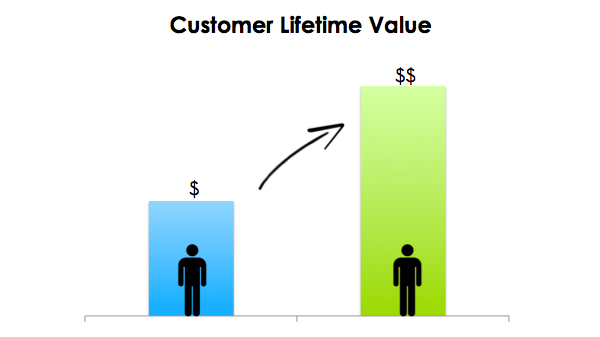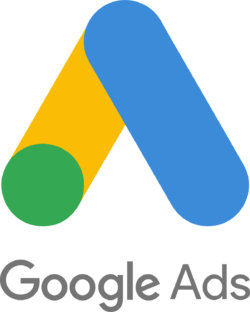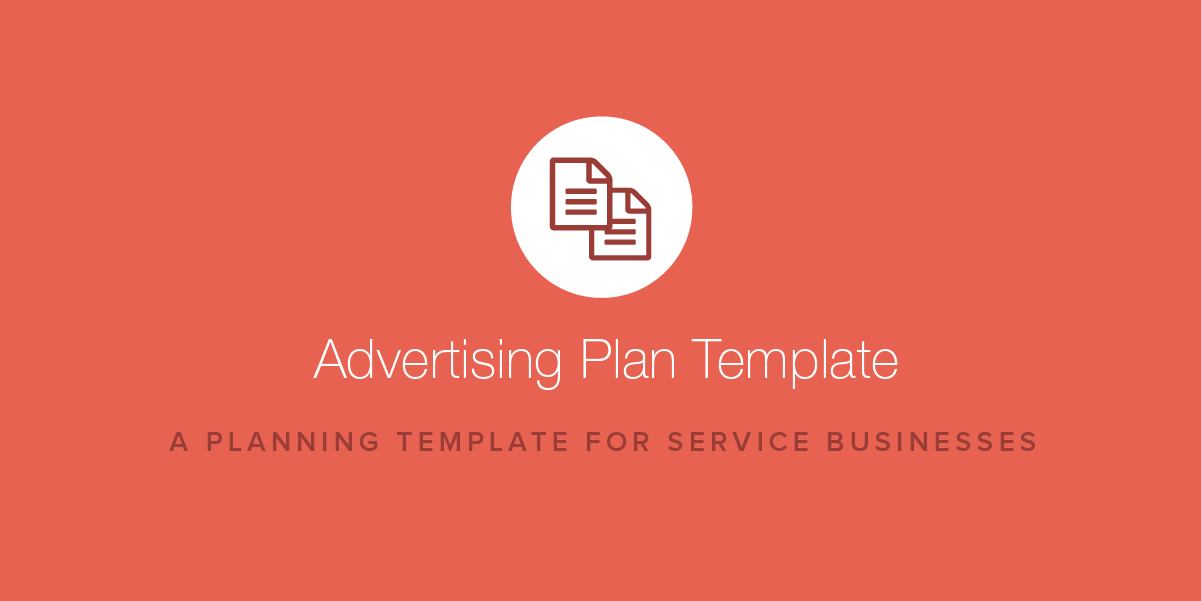A Complete Advertising Plan Template for Service Companies
- November 4, 2018
- By: Vonigo
The success of your service company depends on two things: acquiring new customers and retaining your existing ones. Read below for a complete advertising plan template that will help you set a course for your advertising and encourage growth in your business.
Establish Your Goals
Before you spend a penny on advertising, you should set a goal. We’ll talk about more specific measurement metrics below. But it’s important to know what your desired outcome looks like.
Do you have spots in your schedule that you’d like to book up? Are you considering expanding your fleet and want to increase your bookings? Do you have revenue or profit targets that you want to hit? Set a high-level goal first — it will help inform a lot of the decisions that you’ll make as you formulate your plan.

Cost per Acquisition (CPA)
It’s not a magic number, but it can work like magic for your company when you know what it is. Your CPA is the amount that you have to spend on advertising to land a new customer.
With all of the spending that you will do on advertising, you should strive to establish this important figure. Let’s say for example you place some Google Ads around some specific keywords in your area. Based on the budget you have in play and the tracking you have in place, you know that for every $X you spend, you get a new customer.
If the amount of X is less than the profit you earn on each job you book, you’re safe. Ideally, it’s much lower than the profit from each customer, but we will discuss that in more detail below.
Average Dollar Sale (ADS)
Look at all of the jobs you booked this month (or this year). Add up all of the revenue from them and then divide by the number of jobs. The number you’re left with is your average dollar sale.
Knowing this number is important too. Ideally, you know what it costs to acquire a customer (CPA), and the average of what a customer is worth to you (ADS). When you know these two numbers, you get a great sense of whether your investment in advertising is working for you.

LTV (Lifetime Value of Customer)
Your ADS is not the whole picture though. In some businesses like window washing, home cleaning, and more, a customer might return to you time and time again. They may even book with you for regular service.
In these cases, you should consider the lifetime value of a customer to you, and use that figure to help determine what you’re willing to spend to buy one. This is why you might see businesses offering great rates on introductory services — they know that a percentage of those customers will remain.
Knowing your LTV is very useful for helping to gauge the effectiveness of any given ad campaign. Whenever your LTV is relevant, consider it when measuring your campaigns.
Know Your Competition
Who are you competing with in the market? More specifically, who are competing with for any given ad campaign? The battlegrounds might be different than you think.
Depending on your service offerings, you may or may not be competing for the same types of customers as the company you thought was your competition. For example, if you’re a moving company that specializes in cross-country moves, you’re not competing against a local company that does one-day small moves and appliance moving.
Knowing who you’re really up against, and how they do their own advertising can help you determine how you’ll differentiate yourself and communicate your value to the market.
Targeting is Key
Further down the track of knowing your competition is to know exactly who your target market is. If you’re a moving company that does office relocation, for example, your ad placements and offers should reflect that.
Each advertising channel (see below) has different ways that you can target your specific niche. If you’re too broad about your offerings or your messaging, you may be competing with too many other companies. To continue with the moving example, if you know that you want to focus only on young families that are relocating due to work, it will help you specify your ads and targeting.

Set Your Budgets
Before you proceed, you should know what you’re willing to spend. In order to determine the key stats that inform future decisions, you have to put yourself out there. Ideally, you should invest only what you afford to do long term. Set a monthly budget for example, and adjust as you go.
The process should involve plenty of analysis and testing. You don’t want to invest too heavily in unproven tactics from the start. You do, however, want to make advertising part of your long-term strategy, so give some thought to what your ongoing ad budgets will be.
Testing each channel for its efficacy will help determine how you divvy up your budget. In the advertising plan temple below, we’ll give you some examples of how to get started.
Double Down on Stuff That Works
When an ad works (see above for CPA, ADS, LTV), do more like that. Below, in the advertising plan template, we highlight a number of different channels and options you can try. If you try a number of different options and one proves to be more successful than the others, be prepared to shift your budgets to the tactic that works best.
At the risk of beating this drum one too many times, think about that CPA and how it relates to your profitability. If your advertising investment is proving to work, double down. In other words, invest more budget into what works for you. If an investment in advertising proves profitable, why not invest more, right?
Consider Your Business’ Seasonality
Some service companies are more seasonal than others. Cleaning or junk removal businesses, for example, might onboard more new customers during springtime. Some businesses even have busy weeks within each month (like how movers are busier during month end).
The seasonality of your business should be considered when you’re placing your ad budgets as well. Yes, you want to take full advantage of your busy season. But you might also want to help smooth out your revenue over the month or year. The offers you advertise, and the ad copy you use, will be affected by this seasonality, so be sure to consider its implications.

Landing Pages
With online ads, or specific offers designed to drive website traffic, it is often not advisable to send visitors to a generic page on your website. To help make your ad dollars count, assign specific “landing pages” for your campaigns. It will help your would-be customers to know they’ve found what they’re looking for.
For example, let’s say you’re offering a spring cleaning special for new customers. Rather than publish the details of that offer on your homepage, you can have a specific page designed specifically to promote that offer.
This is beneficial in a number of ways:
- It helps the visitor know they’ve arrived at the right place to claim the offer
- It keeps the offer info hidden from other customers and traffic
- You can track the success of a campaign by having one specific destination for that campaign traffic
Online Booking Forms
Your landing pages should be prepared to turn your visitors into customers. The best way to do that is to offer your booking options right on the page itself.
A good rule of thumb for a landing page is to leave no doubt as to what the page wants a visitor to do. Since the goal is to get them to book your service, placing an online booking form in front of them is the best practice. Having software that will convert that booking into an actual job on your calendar is the easiest way to take a visitor from a click on your ad to being a paying customer.
Specific Advertising Channels
Now that we’ve discussed some of the finer points of planning and strategy, let’s dig into the specific ad channels available, and how to use each.
Google Ads
 This is perhaps the best place to invest in first. When a customer performs a Google search for your kind of service, you can “bid’ on the keyword to have your listing appear on the SERP (search engine results page). As a result, this may also be the most competitive channel. Many other businesses in your industry might already be established here. Refer to our notes about knowing your competition to help you differentiate and compete.
This is perhaps the best place to invest in first. When a customer performs a Google search for your kind of service, you can “bid’ on the keyword to have your listing appear on the SERP (search engine results page). As a result, this may also be the most competitive channel. Many other businesses in your industry might already be established here. Refer to our notes about knowing your competition to help you differentiate and compete.
With service businesses, it helps to be specific about the geographical area you operate in as well, to keep your keywords more specific. For example “cleaning business Austin” will be a lot less expensive than strictly “cleaning business.” But “cleaning business Barton Hills Austin” might be even less expensive.
We have written before about keyword research and placing Google Ads. We advise that you do plenty of reading and keyword research, to help you get the most out of your ad investment.
Facebook and Instagram
 We’re lumping these two together because they are both owned by the same company, and you can place both at once. On both channels, your targeting is paramount. In a Google Ad, you’re paying to show your ad to someone who searched for a specific term.
We’re lumping these two together because they are both owned by the same company, and you can place both at once. On both channels, your targeting is paramount. In a Google Ad, you’re paying to show your ad to someone who searched for a specific term.
On Facebook and Instagram, you’re showing your ads more passively, in a person’s News feed, based on their interests. This might be an opportunity, and it may not. Since you aren’t able to target people at the specific moment that they are ready to research and/or buy, your tactics and ad copy change.
Is it beneficial to target everyone in a certain age group that lives in a certain geographical area to promote your service? Maybe not. But it might work to target families with college-aged students with ads for your moving services in July and August. Or it might make sense to promote spring cleaning services to young families starting in the New Year. Your mileage may vary. Get informed and find out what works.
Retargeting Pixels
![]() A retargeting pixel is a “cookie” that a visitor picks up when they visit your website. What it allows you to do is show ads to them even after they’ve left. Ever visited a website and then days later you see ads for it on your favorite websites or on Facebook? That’s ad retargeting at work. (If this freaks you out, empty the cache in your web browser)
A retargeting pixel is a “cookie” that a visitor picks up when they visit your website. What it allows you to do is show ads to them even after they’ve left. Ever visited a website and then days later you see ads for it on your favorite websites or on Facebook? That’s ad retargeting at work. (If this freaks you out, empty the cache in your web browser)
You can have retargeting pixels specific to Facebook (show ads on Facebook to visitors who have previously visited your site) or for ads that appear elsewhere on the web by using a retargeting service like Adroll.com. When that person visits websites that use popular ad networks that have partnered with services like Adroll, you can buy ad inventory so they see your ads, even on popular sites like news outlets. You may have seen this before too: shop for new eyeglasses or a vacuum on one website, and see ads for them for weeks afterward, seemingly everywhere you go.
You are only paying to deliver ads to people who have already visited your website. In fact, they may already be considering booking, and just a need a reminder. For this reason, retargeting can be one of the most effective advertising spends you can invest in.
Other Social Networks
In addition to Facebook and Instagram, there are a number of other social networks that you can place ads on. Twitter, LinkedIn, Pinterest, and many others also offer ad products. Depending on your services and your target market, these may be right for you.
We advise that you try your hand with Google Ads and Facebook targeting first, and expand into other channels later. If your market proves too competitive on those other channels though, there are other places to stake your claim.
TV and Radio
In terms of cost, these are among the most expensive advertising options available. For some companies, when they want to truly dominate their market, it might make sense to invest in these. You will have to consider the cost of not just the “airtime,” but also the production of the ad itself.
Most local radio and TV stations will offer in-house production as part of the ad buy, but they will still require larger up-front commitments. They are also harder to track as well unless your customer discloses to you that they heard or saw your ad.
If these options are too expensive, consider some low-cost alternatives:
- YouTube sponsorship, either through their ad products or by sponsoring a channel
- Creating your own video content for use in your own ads or landing pages
- Creating or sponsoring podcasts that are enjoyed be relevant audiences
Outdoor Media or Out-of-Home Advertising
 Your ad on the side of the bus, or at the bus stop, or on a billboard. The lowest cost option is an obvious one: The sides of your own fleet of vehicles. Each of your vehicles should be a mobile billboard displaying your contact info.
Your ad on the side of the bus, or at the bus stop, or on a billboard. The lowest cost option is an obvious one: The sides of your own fleet of vehicles. Each of your vehicles should be a mobile billboard displaying your contact info.
If you want to go even bigger than just your own fleet, outdoor advertising can be a great option. Once again, tracking the success of these can be tricky. But there are examples of how the right placement can work. A junk removal ad on a billboard near the dump, for example. Consider the costs as they relate to your budgets. We advise that you use outdoor ads as a supplement to online channels, and not place all of your bets on them.
A Sample Advertising Plan Template
Goal:
To increase our weekly bookings by 40%. To run our entire fleet at 85% capacity.
Budget:
$XX
Channels
Google Ads
50% of the budget.
Create a list of competitive keywords and bid on the most active and area-specific ones in our service area. Dedicate half of this budget to experimenting with lower cost, lower volume, low competition keywords that are unique to our business.
Create a minimum of three landing pages for different keyword sets for use in our initial tests. Each month we will create new versions and alternates based on what we learn about keyword performance.
Facebook and Instagram
30% of the budget.
First, install a Facebook Pixel into the code of our website. Then create two branded ads to start: One telling a story of our company, and a second with an introductory offer. Build a landing page for each. Spend some time each month creating new content and stories for use in new boosted posts.
Begin with three different targeted audiences to test various targeting criteria: Age, location, interests, and more. Spend some time each month analyzing the performance of those audiences and trying other Ad Sets based on learnings.
Dedicate half of this budget to retargeting ads. Continue to show different ads to people who have visited the site and are carrying the Facebook pixel.
Outdoor Advertising
20% of the budget.
Where it counts, we will invest this money into long-term, outdoor advertising. We will place it where it’s most visible to our target market and also our team members. Our outdoor advertising will be used to reinforce to our community that we are dedicated to serving them.
Bus bench ads? Rack cards? Billboards? Elevators or taxis? We’ll choose what works for us, and our budget. We will be proud of how we’re represented. We are less concerned about the performance of these and think of them as reinforcement.
Reporting
We will provide a monthly report on the results of Google Ads and Facebook/Instagram. We will recommend at least one change to our ads per month in response to what we learn.
Using Service Business Management Software to Handle Bookings
At Vonigo, we make the software that makes it possible for a customer to book your service online, and make it a job on a schedule that your whole team can access and manage.
Want to learn about how service business software can help you increase your bookings and your profits? Book a free, private demo of Vonigo.




